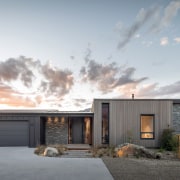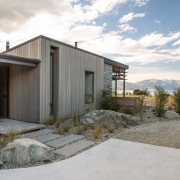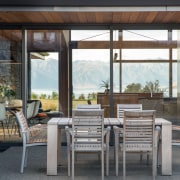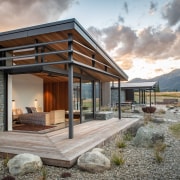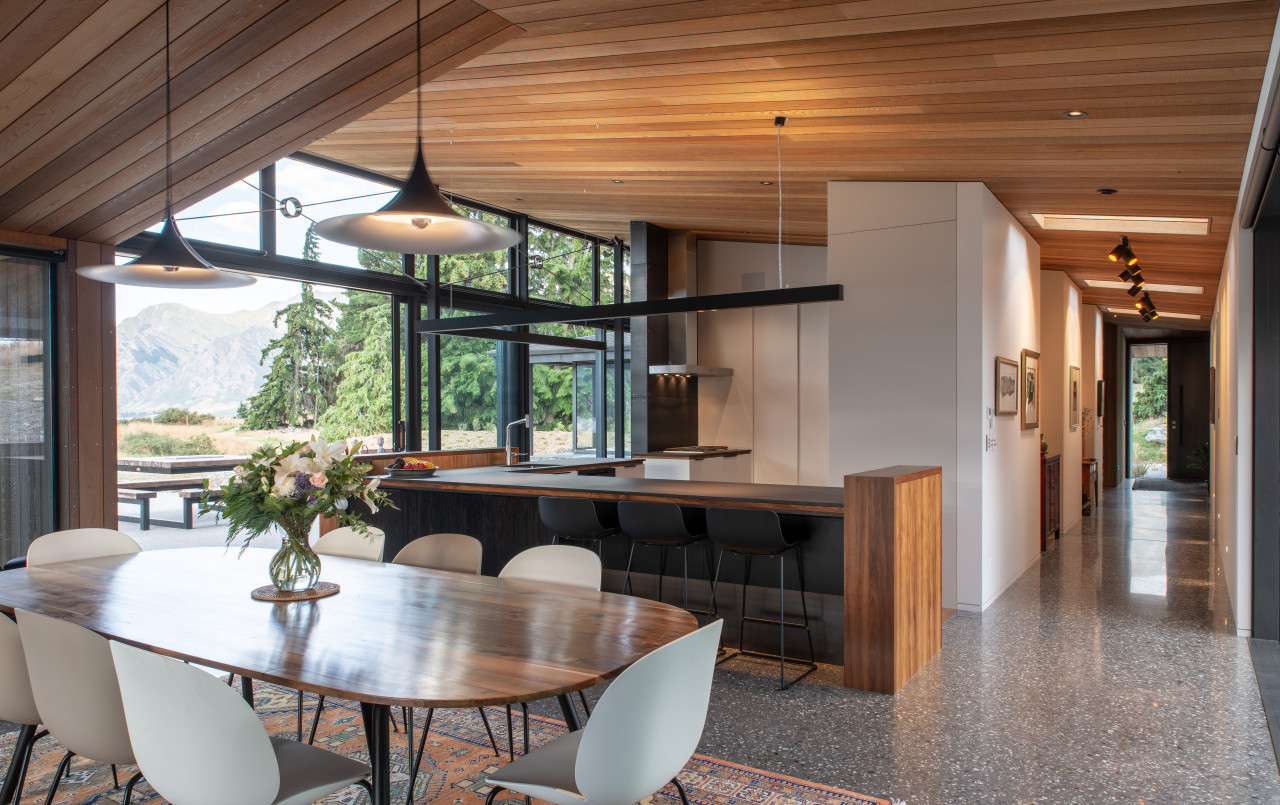Living room and master bedroom pavilions stretch out to the views in this lakeside family home
With design nods to early settler cottages and leading spaces trained on the views, this snug, modern home is all about embracing its mountain setting

So the setting is world class – but how best to make the most of building in such a pristine environment? Orientation, material empathy, and connections to local history are just some ways this home reaches out to its surroundings.
Nestled on the shores of scenic Lake Hawea, a 20-minute drive from Wanaka, the new home by Barry Condon of Condon Scott Architects makes the very most of breathtaking views of the lake and Southern Alps.
The generous-sized family home is warm and sheltered from the alpine weather, with an aesthetic that is definitively of the area.
“Right from the outset, planning restrictions limited the width and height of the building,” says Condon.
“Plus, the often-strong winds that come in off the lake had to be taken into account when establishing the shape of the home.”
Addressing these factors, he designed the house in an H configuration. This arrangement allowed the bulk of the building itself to provide shelter from the wind, creating a series of terraces and courtyards that can be enjoyed variously – depending on weather patterns.
The home also responds to its environment in another way – as seen when viewed from above.
“At our first briefing, the owners asked for an interesting roofline visible on approach from the main driveway. This was a challenge as there was a 4.5 metre height restriction over the site.
“To address this, we developed a series of interpassing roof planes. Indoors these create a run of large volumes and smaller, more intimate spaces. Externally, the combination of volumes presents a dynamic roof form to the observer.”
The home’s understated material palette of cedar, local stone, and steel continues from the exterior to the interior, and forms an immediate connection with the landscape. This strong link to the land is furthered by a pair of heavy schist walls which flank the living spaces and contain seating, shelving and a fireplace.
The two rugged stone walls form a pair of organising axes that run through the house – orienting key spaces towards the views. The feature walls are intended to echo early settler cottages once common to the area, thus adding a sense of history into the fabric of the building.
The architecture embraces the mountain setting in many ways. The living and bedroom spaces are positioned to take full advantage of the wide-spanning vistas, with garaging and utility spaces located to the rear. Together with the schist walls, dynamic cedar ceilings angle the eye towards different aspects of the view.
The home also minimises fuel bills and its impact on the environment by reducing the need for heating and cooling, with thermally broken windows and insulation levels well above code.
Passive solar gain is addressed with louvres and eaves that mitigate the sun’s rays during the summer months, to prevent overheating.
And equally prepared for the colder winter months, the home’s polished concrete slab acts as a thermal sink, storing the sun’s heat during the day to release it back into the home at night.
Credit list
Architect
Builder
Main floor
Blinds
Benchtops
Sink
Ovens
Cooktop
Refrigerator
Kitchen lighting
Awards
Interior design
Kitchen manufacturer
Paint
Kitchen cabinetry
Splashback
Taps
Steam oven
Microwave
Dishwasher
Kitchen floor
Story by: Charles Moxham
Photography by: Simon Larkin
Home kitchen bathroom commercial design
Classic looks, contemporary efficiency
Personality plus
Diving into nature
Trends 37-01
In this edition, we showcase a spectacular grand home renovation along with other enviable award-winning homes. There’s ...
Read More
